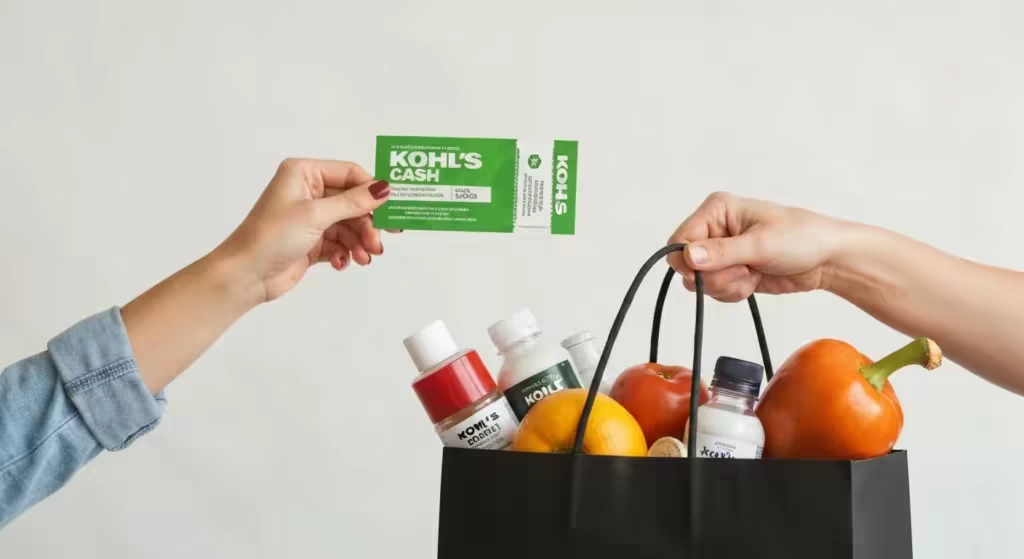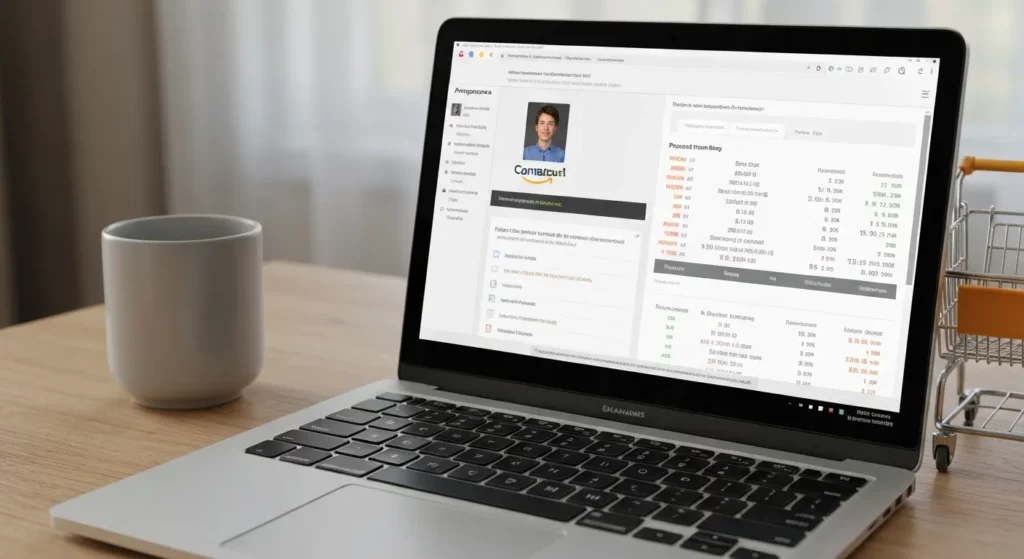Retirement is a funny thing. For forty years, my financial life ran on a predictable rhythm: work hard, get a paycheck, pay the bills, save a little, repeat. The numbers went up, the nest egg grew, and I felt a certain kind of security. But the day that last paycheck came, the rhythm changed. The flow of money became a one-way street—out. Suddenly, the nest egg wasn’t just a number on a statement; it was a finite resource, a reservoir that my wife, Helen, and I had to manage carefully to last the rest of our lives.
This new reality hit me one Tuesday afternoon. I was online, looking for a new bird feeder for the backyard. The old one had finally surrendered to a particularly ambitious squirrel. I found a nice-looking cedar one on a home and garden website. The price was $49.95. Not outrageous, but not cheap, either. In my working years, I wouldn’t have thought twice. I would have clicked “Buy Now,” entered my credit card details, and that would be that. But on this day, I hesitated. Fifty dollars. I started doing the mental math. That’s a nice dinner out for Helen and me. It’s a tank of gas. It’s part of the electricity bill.
I felt a pang of something I hadn’t felt in a long time: hesitation over a small, simple purchase. It wasn’t about being poor; we were comfortable. It was about being a good steward of what we had. It felt irresponsible to just throw money at the screen without a second thought. I closed the browser tab, telling myself I’d think about it. But what I was really thinking was, there has to be a smarter way to do this.
My old way of shopping online was, to put it mildly, unsophisticated. I was a point-and-click buyer. I knew how to use a search engine to find what I wanted, and I’d maybe compare prices between two or three major sites, but that was the extent of my “strategy.” The world of coupons, promo codes, and deals felt like a chaotic bazaar full of flashing banners and dubious links. I’d hear my daughter, Sarah, talk about “stacking deals” and “getting cashback,” and it sounded like a foreign language. I figured it was a young person’s game, requiring a level of technological wizardry and patience that I just didn’t possess. My skepticism was my shield. “Free money? There’s always a catch,” I’d mutter to myself. I was leaving money on the table, I knew it, but the effort to pick it up seemed too great.
The Gentle Nudge That Changed Everything
The turning point wasn’t a lightning bolt but a quiet conversation. Sarah was visiting one weekend, and I mentioned my bird feeder dilemma. She was sitting at our kitchen table, scrolling on her laptop while I made coffee.
“Did you check Rakuten first, Dad?” she asked, not even looking up.
“Raku-what?” I asked, pouring the coffee. “Sounds like a Japanese monster movie.”
She laughed. “No, it’s a cashback site. You just click through their link before you buy something, and they give you a percentage of your purchase back. For free.”
There it was again. “Free.” My skepticism flared up instantly. “What’s the catch? They sell your information? They track everything you do?”
Sarah finally looked up from her screen, a patient smile on her face. She knew her old man well. “It’s a legitimate business, Dad. They get a commission from the store for sending you there, and they share a piece of that commission with you. It’s just affiliate marketing. And they have a little browser tool—an extension—that pops up and reminds you. You don’t even have to remember to go to their site first.”
A “browser tool.” An “extension.” More tech jargon. I must have looked like a deer in the headlights, because she softened her approach. “Look,” she said, turning her laptop toward me. “Let me just show you. It takes two minutes to install. If you don’t like it, you can take it off just as easily. What’s the harm in trying?”
She had me there. What was the harm? My pride? My stubborn resistance to things I didn’t understand? Helen always says my curiosity will be the last thing to go. And I was curious. So, with a deep sigh of concession, I said, “Alright, show me this magic trick.”
My First Foray into Automatic Savings
Right there at the kitchen table, Sarah walked me through it on my own laptop. I use the Google Chrome browser, and she showed me how to go to the Chrome Web Store, search for “Rakuten,” and click “Add to Chrome.” I watched, slightly amazed, as a little “R” icon appeared in the top-right corner of my browser. It was… surprisingly painless. There were no long forms to fill out, no invasive questions.
“Okay, now go back to that bird feeder website,” she instructed.
I typed in the address, and as the page loaded, something new happened. A small window dropped down from the corner of my screen. It was from Rakuten. It said, “Activate 8% Cash Back.” My heart gave a little flutter of excitement. This was real. It was happening right on my own computer.
“Just click the button, Dad,” Sarah said, as if sensing my hesitation.
I clicked it. The button turned green, and the window disappeared. I was just… back on the website. Nothing else looked different. “That’s it?” I asked.
“That’s it,” she confirmed. “Now just buy your bird feeder like you normally would.”
I went through the checkout process, my fingers hovering over the final “Place Order” button. A wave of doubt washed over me. Was this actually going to work? Or was this some elaborate ruse? I pushed the thought aside and clicked. The order confirmation page appeared. No trumpets, no fanfare. It felt… anticlimactic.
A few hours later, an email landed in my inbox. The subject line was: “Cash Back Alert! You’ve earned $4.00 from Rakuten.”
I stared at it. Four dollars. It wasn’t a life-changing amount of money. It wouldn’t pay off the mortgage or fund a trip to Europe. But in that moment, it felt like I had won the lottery. It was four dollars I didn’t have before. Four dollars that were just floating in the digital ether, waiting for me to claim them. It wasn’t a trick. It was real. I had done it. I had used a modern browser tool to save money automatically, and it was exhilarating. I felt a surge of pride and accomplishment that was completely out of proportion with the amount I’d saved. I had conquered a small piece of the digital world that had once intimidated me.
Building on the Momentum: Discovering a New Weapon
That first four dollars opened the floodgates. I became a cashback convert. Before any online purchase, I’d look for that little Rakuten pop-up. I bought Helen a new novel from Barnes & Noble and got 2% back. I ordered new filters for the furnace from Lowe’s and got 1.5% back. I even booked a hotel for our weekend trip to visit my sister and got 6% back. The small amounts started to add up in my Rakuten account, a growing testament to my newfound savviness.
It was a great system, but I started to notice its limitation. Rakuten was fantastic for getting a percentage back on the final price, but it didn’t help me lower that price in the first place. I still had that nagging feeling: Am I getting the absolute best deal? The checkout pages always had that taunting little box: “Enter Promo Code or Coupon.” It might as well have been a locked treasure chest for which I had no key. I never had a code. Where did people even find them?
Once again, my daughter Sarah provided the answer. During a phone call, I was boasting about the $27 I had accumulated in my Rakuten account. “That’s great, Dad!” she said. “But are you using Honey, too?”
“Honey? What’s that, a grocery delivery service?”
“No,” she laughed. “It’s another one of those cashback extensions for Chrome. But its main superpower is finding those promo codes for you. Automatically. It just tries them all when you get to the checkout.”
My interest was piqued. The idea of a digital key that could automatically unlock that “Promo Code” box was incredibly appealing. I was feeling more confident with technology now. Installing another extension didn’t seem so daunting. That evening, I went to the Chrome store, searched for Honey, and added it. A new, stylized ‘h’ icon appeared next to my Rakuten ‘R’. My little arsenal of browser tools was growing.
My first test case came a week later. My old electric shaver was on its last legs, and I had my eye on a new Philips Norelco model. I found it on the manufacturer’s website for $89.99. I went to the site, and sure enough, my Rakuten extension popped up, offering 5% cashback. I activated it, feeling smug. That would be about $4.50 back. Not bad.
I added the shaver to my cart and proceeded to checkout. As the checkout page loaded, the little Honey icon in my browser lit up with a number on it. A small window appeared. “We found 5 potential codes!” it announced cheerfully. Below that was a big button that said, “Apply Coupons.”
My heart did that little flutter again. With a sense of giddy anticipation, I clicked the button. A new little window overlaid the screen, and I watched in fascination as Honey worked its magic. It was like watching a tiny, efficient robot at work. It showed me the codes it was trying: “WELCOME10,” “SAVE15,” “FREESHIP.” Most of them were rejected. But then, it tried one: “FATHER20.”
A green checkmark appeared. The page refreshed. And the price in my cart dropped from $89.99 to $71.99. An eighteen-dollar savings. Instantly. My jaw literally dropped. Eighteen dollars! That was far more than the $4.50 in cashback I would have gotten from Rakuten. I had just saved 20% with a single click, using a code I never would have found on my own.
This was a different kind of victory. Rakuten felt like getting a rebate after the fact. Honey felt like winning the negotiation right at the point of sale. It was an active, immediate thrill. From that moment on, my strategy for saving while shopping online automatically had a new, powerful dimension.
My Personal Rakuten vs. Honey Comparison: A Two-Pronged Attack
After several months of using both tools, I developed my own little system. It became a pre-checkout ritual, a small game I play to ensure I’m not leaving a single penny on the table. People often ask which is better, Rakuten or Honey, but for me, that’s the wrong question. It’s not about an “either/or” choice; it’s about using the right tool for the right job. They serve different primary purposes, and understanding that is the key to maximizing your savings.
Rakuten: My Reliable Rebate Partner
I think of Rakuten as my steady, dependable foundation. It’s my go-to for straightforward cashback. The beauty of Rakuten is its consistency and its breadth. It has partnerships with thousands of stores, many of which rarely offer public coupon codes. For big-ticket items from department stores like Macy’s, or for booking travel on sites like Expedia, Rakuten is often the best and only game in town.
The process is passive, which is part of its charm. I click “Activate,” and I can forget about it. The money quietly trickles into my account in the background. Then, four times a year, the magic happens: Rakuten sends out what they call the “Big Fat Check” (or a PayPal deposit, in my case). Getting that notification that a payment of $50, $80, or even over $100 has been sent is a fantastic feeling. It’s like a forced savings plan that pays for a few special dinners or helps fund a project in my workshop.
For me, Rakuten is about the long game. It’s the slow and steady accumulation of savings from dozens of purchases. It’s my reward for loyalty and for remembering to make one extra click.
Honey: My Secret Weapon for Instant Discounts
Honey, on the other hand, is my surgical strike weapon. It’s for the thrill of the hunt. Its primary strength, and the reason I love it, is its coupon-finding feature. That little box that automatically tests codes has saved me from overpaying more times than I can count. It excels at stores that frequently cycle through promotions—think pizza delivery, apparel brands, or tech gadget sites.
A 20% off coupon almost always beats a 3% cashback offer. It’s simple math. Honey has saved me $10 on a pizza order, $25 on a pair of new running shoes for my daily walks, and even $50 on a new set of patio chairs.
Honey has another feature I’ve come to rely on: the Droplist. If I’m not in a hurry to buy something, I can add it to my Droplist. Honey will then watch the item for me across various sellers and notify me when the price drops. I did this with a new drill I wanted. It was listed at $129. I added it to my Droplist and forgot about it. A month later, I got an email from Honey: the price had dropped to $99 for a weekend sale. That’s a perfect example of saving while shopping online automatically; it required zero effort on my part after the initial click.
My System: How I Use Them Together
So, here’s my personal strategy, the one I follow every single time I shop online. It’s a simple, two-step check:
- Activate Rakuten First: As soon as I land on a retail website, I look for the Rakuten pop-up. I always click “Activate” to get the cashback process started. This sets my baseline savings.
- Let Honey Run at Checkout: I do all my shopping, add items to my cart, and proceed to the checkout page. There, I let Honey do its thing. I click “Apply Coupons” and watch to see what it finds.
This is where the critical decision comes in. Sometimes, using a coupon code found by Honey will invalidate the cashback from Rakuten. The store’s terms might state that you can’t combine a promo code with a cashback offer. So, I have to do a quick mental calculation:
Is the instant dollar savings from the Honey coupon GREATER than the percentage cashback I would get from Rakuten?
If Honey finds a 20% off coupon, it’s almost always the winner. I’ll happily sacrifice my 3% cashback for that. If Honey only finds a “free shipping” code on an order where shipping was already free, then I know my Rakuten cashback is the better deal. It takes about ten seconds to assess, and it’s become a satisfying little puzzle. This personal Rakuten vs Honey comparison happens in real-time with every purchase, and it ensures I’m always choosing the best possible discount available at that exact moment.
The Real Payoff: More Than Just Money
In the two years since that first bird feeder purchase, I estimate I’ve saved well over a thousand dollars using these tools. That’s not an insignificant sum. It’s paid for our anniversary trip last year. It’s restocked my woodworking shop with new tools and exotic woods. It’s allowed Helen and me to treat our grandkids without dipping into our core retirement funds.
But the story isn’t really about the money. The real transformation has been in my mindset. I went from being a passive, slightly intimidated online shopper to an active, engaged consumer. I feel smarter. I feel more in control. That feeling of hesitation I had over a fifty-dollar purchase is gone, replaced by the confidence that I’m making the most of every dollar we have.
There’s also a profound sense of satisfaction in mastering something new. In a world that often seems to be racing ahead technologically, it feels good to grab a piece of it and make it work for you. It’s not some complicated skill; it’s just being open to trying. It has given me the confidence to explore other digital tools, from financial planning apps to online learning platforms.
What I’ve learned on this journey is that saving money in the digital age isn’t about endless, tedious searching. It’s about using smart browser tools to automate the process. It’s about a small, one-time effort—installing an extension—that pays dividends over and over again.
My advice, born directly from my own journey from skeptic to evangelist, is simple:
- Just Try It. Overcome that initial skepticism. Pick one tool, like Rakuten, and install it. Make one small purchase. Seeing that first bit of cashback arrive in your account is all the proof you’ll need.
- Don’t Be Intimidated. These tools are designed for everyone, not just tech experts. The entire point is to make saving easy. If I can do it, believe me, anyone can.
- Build Your Own System. My two-pronged approach with Rakuten and Honey works for me. Maybe you’ll prefer one over the other. The key is to find a workflow that feels natural and doesn’t add stress to your shopping.
- Embrace the Mindset Shift. See this not as a chore, but as a game. It’s you against the full retail price. Every dollar you save is a point for your team. It reframes saving from an act of deprivation to an act of empowerment.
Today, as I sit here typing this on a laptop I bought with a 15% off coupon found by Honey (while also getting 2% cashback from Rakuten), I can say with absolute certainty why I never check out without a cashback extension. It’s because doing so would feel like willingly leaving my wallet on a store counter. It’s a simple, powerful, and deeply satisfying habit. It’s a nod to the careful steward I want to be, and a testament to the fact that it’s never too late to learn a new trick that makes life just a little bit richer.














